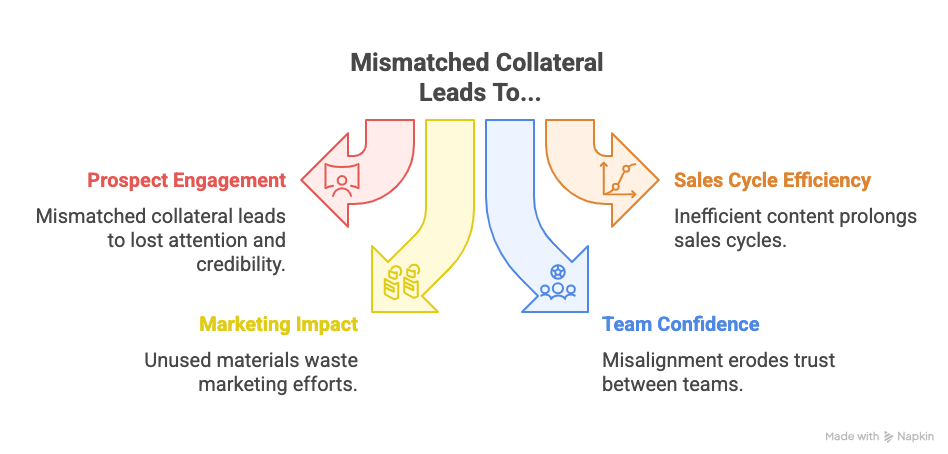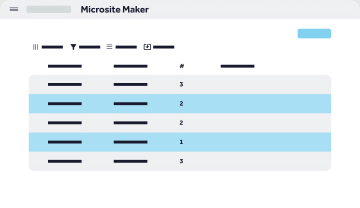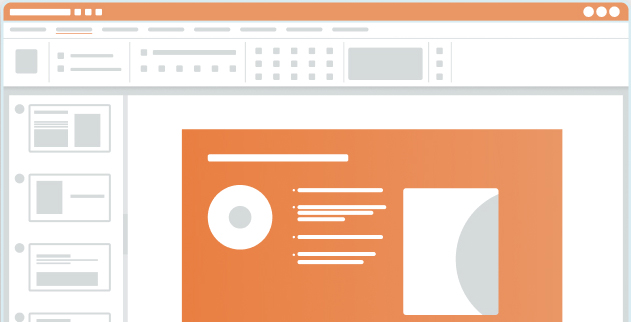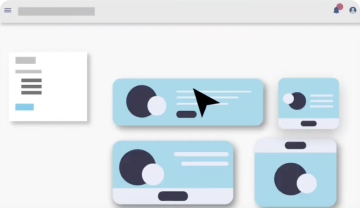Picture this: You’re sitting in a discovery call that was supposed to last five minutes. The prospect has a quick question about pricing. But instead of a simple answer, your sales rep pulls up a 30-slide deck and starts clicking through company history, detailed feature comparisons, and implementation timelines.
Sound familiar?
Or maybe you’ve been to a trade show where your booth is packed with glossy brochures that nobody picks up, while the booth next to you draws crowds with a simple tablet showing quick product demos.
These scenarios happen every day in B2B sales, and they share a common problem: teams are bringing the wrong assets to the wrong moments. It’s not just awkward – it’s costing deals and wasting everyone’s time.
Why This Keeps Happening (And Why It’s Getting Worse)
The root of this problem isn’t laziness or poor planning. It’s structural. Most organizations create content in silos, with marketing teams producing assets without fully understanding how and where they’ll be used in real sales situations.
Here’s how it typically plays out: Marketing gets a request for “a presentation deck” or “some brochures for the trade show.” They create beautiful, comprehensive materials that check all the boxes from a content perspective. But they haven’t considered the actual context where these materials will live – the length of the interaction, the audience’s mindset, or what the sales rep is trying to accomplish in that specific moment.
Meanwhile, sales teams are grabbing whatever assets are available, often defaulting to the most comprehensive piece of collateral they can find. The thinking goes: “If I bring the big deck, I’ll be prepared for anything.” But comprehensive doesn’t always mean appropriate.
The result? Prospects get overwhelmed with irrelevant information, sales reps look unprepared, and marketing’s hard work goes unused.
The Real Cost of Mismatched Collateral

When your collateral doesn’t match the moment, several things happen:
Prospects tune out. Nobody wants to sit through a detailed product demo when they just asked a simple question about pricing. You lose their attention and credibility.
Sales cycles get longer. Instead of moving prospects efficiently through your funnel, mismatched content creates friction and confusion at every stage.
Marketing efforts get wasted. When sales teams can’t find the right asset for the right moment, they either improvise poorly or avoid using marketing materials altogether.
Teams lose confidence in each other. Sales complains that marketing doesn’t understand their needs. Marketing wonders why their materials aren’t being used.
A Better Way: Match Your Assets to the Moment
The solution isn’t to create more content – it’s to create the right content for each specific context. This means thinking beyond just “what information do we need to share?” and asking “how will this information be consumed?”
Here’s how one company got this right:
A Fortune 10 healthcare client came to us with what seemed like a straightforward request: they’d just won 5,000 new member lives and wanted a single transition video before open enrollment started in three months.
Instead of jumping straight into video production, we paused and asked better questions: What were these new members actually worried about? When and how would they consume this information? What did they need to do after watching?
What we discovered changed everything. These weren’t just people who needed general information about their new plan – they were anxious individuals wondering: “Will my primary care doctor still be in-network? How do I find specialists? What if I need urgent care?”
Instead of one generic video, we built a content suite designed for how people actually behave when they’re stressed and need answers quickly:
- Two short explainer videos (under 2 minutes each) focused on the most common questions
- A simple microsite that housed those videos plus interactive tools for provider searches and virtual care lookups
- Follow-up email sequences that delivered the right information at the right time based on where people were in their transition
The result? Members found answers on their own, call center volume dropped significantly, and first-year engagement rates exceeded expectations.
How to Build Your Collateral Flowchart

Creating the right assets for each moment starts with mapping your sales process to your content needs. Here’s a practical framework you can use:
Step 1: Define Your Meeting Types and Contexts
Start by listing every type of interaction your sales team has with prospects. Don’t just think about formal meetings – include trade show conversations, follow-up calls, email responses, and everything in between.
For example:
- 5-minute discovery calls: Quick qualification conversations
- Booth conversations: 2-3 minute interactions at trade shows
- Scheduled demos: 30-60 minute product presentations
- Follow-up emails: Post-meeting information sharing
- Proposal presentations: Final decision-maker meetings
Step 2: Map Audience Mindset to Each Context
For each interaction type, consider what’s happening in your prospect’s head. Are they:
- Just learning about their problem?
- Evaluating multiple solutions?
- Ready to make a decision?
- Dealing with internal skepticism?
A prospect at a trade show booth is in exploration mode – they want to understand quickly whether you’re worth a longer conversation. Someone in a scheduled demo has already decided you’re worth their time and wants to see specific capabilities.
Step 3: Choose Formats That Fit the Moment
Now match your content format to both the context and the audience mindset:
For quick interactions (booth conversations, brief calls): One-page overviews, short videos, simple comparison charts
For exploration meetings (first demos, discovery calls): Interactive presentations, case study summaries, ROI calculators
For decision-making (final presentations, proposal reviews): Detailed proposals, implementation timelines, comprehensive ROI analyses
The key is restraint. Just because you have detailed information doesn’t mean you should share it in every context.
Step 4: Create Clear Usage Guidelines
Once you have the right assets, make it easy for your sales team to choose correctly. Create simple guidelines like:
- Trade show booth: Start with the 2-minute demo video, have one-pagers ready for takeaway
- Discovery calls under 15 minutes: Use the qualification worksheet, share pricing sheet only if asked
- Scheduled product demos: Begin with interactive demo, have case studies ready for specific industries they mention
Step 5: Centralize and Organize Everything
Store all your assets in one searchable repository with clear tags for when and how to use each piece. Sales reps should be able to find the right collateral in under 30 seconds.
Consider organizing by:
- Meeting type
- Deal stage
- Industry or use case
- Audience role (technical buyer, economic buyer, end user)
Getting Your Teams Aligned
The biggest barrier to better collateral isn’t creating the content – it’s getting marketing and sales aligned on how it should be used. Here’s how to make that happen:
Start with a cross-functional planning session. Before creating any new assets, bring together marketing, sales, and sales enablement teams. Include at least one field rep who can speak from real experience.
Use real scenarios. Don’t talk in hypotheticals. Walk through actual recent sales situations and discuss what content would have been most helpful in each moment.
Create feedback loops. After each major event or sales cycle, gather the team to discuss what worked and what didn’t. Use these insights to refine your content and guidelines.
Make iteration the norm. Your collateral strategy should evolve as your sales process and market conditions change. Build in regular reviews and updates.
Start Small, Think Big
You don’t need to overhaul your entire content library overnight. Start by identifying your three most common sales interactions and making sure you have the right assets for those moments.
For example, if most of your deals start with 15-minute discovery calls, create a simple one-page overview that answers the five questions prospects ask most often. Test it for a month, gather feedback from your sales team, and refine it based on what you learn.
Once you have success with a few key assets, you can expand the framework to cover more situations and create more sophisticated content mapping.
The Bottom Line
The goal isn’t to have perfect collateral for every possible scenario – it’s to stop showing up to meetings with obviously wrong materials. When your content matches the moment, prospects stay engaged, sales conversations flow more naturally, and your marketing efforts actually support sales success.
Your prospects are already overwhelmed with information. The last thing they need is more content that isn’t relevant to their immediate situation. By taking the time to map your assets to actual sales contexts, you’ll stand out as a vendor who understands not just what information to share, but when and how to share it.
Start with your next sales meeting. Ask yourself: What is this prospect really trying to accomplish in this conversation? Then bring exactly what they need to move forward – nothing more, nothing less.




